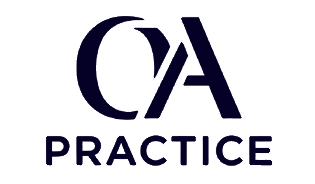D236 Pathophysiology - Set 1 - Part 1
Test your knowledge of technical writing concepts with these practice questions. Each question includes detailed explanations to help you understand the correct answers.
Question 1: A patient presents with muscle weakness and bone pain after years of sedentary lifestyle and poor nutrition. Which cellular process is most likely disrupted in their bones causing increased fragility?
Question 2: During an inflammatory response, which cell type is primarily responsible for releasing histamine to increase vascular permeability and allow immune cells to reach the injury site effectively?
Question 3: A nurse notices that a diabetic patient's blood pH is dropping below normal range. Which compensatory mechanism will the body activate first to restore acid base balance quickly?
Question 4: A genetic counselor explains that a child inherited a disease requiring defective genes from both parents. What inheritance pattern best describes this scenario where carriers show no symptoms?
Question 5: Following a bone fracture, which phase involves the formation of new blood vessels and soft tissue that bridges the fracture gap before actual bone formation begins?
Question 6: During transcription, which enzyme is responsible for copying the DNA sequence into messenger RNA within the cell nucleus before protein synthesis can occur at ribosomes?
Question 7: A patient with chronic joint pain shows cartilage deterioration and bone spurs on imaging. Which pathological process best explains these changes in weight bearing joints over time?
Question 8: When studying cancer development, researchers observe that some individuals are born with one mutated allele but only develop cancer after acquiring a second mutation. What hypothesis explains this?
Question 9: A woman presents with pelvic pain and infertility. Testing reveals endometrial tissue growing outside the uterus on her ovaries and fallopian tubes. What condition does this describe?
Question 10: During diabetic ketoacidosis, which metabolic process produces ketone bodies that contribute to dangerous blood acidification requiring immediate medical intervention to prevent coma?
Question 11: A physician explains that a male patient's bleeding disorder results from inheriting a defective gene on his single X chromosome. What inheritance pattern does this represent?
Question 12: Which type of joint allows the greatest range of motion and contains synovial fluid to reduce friction between articulating bones during movement?
Question 13: When white blood cells move through blood vessel walls to reach infected tissue sites, what process describes this directed migration toward chemical signals?
Question 14: A patient with untreated sexually transmitted infection develops scarring in fallopian tubes leading to infertility. Which organisms most commonly cause this reproductive damage pattern?
Question 15: During bone healing after fracture, what type of cells are responsible for creating new bone matrix during the callus formation phase?
Question 16: A patient's blood work shows extremely elevated glucose levels without ketone production. Which diabetic emergency does this clinical presentation most likely indicate?
Question 17: Which cellular component contains its own DNA inherited exclusively from the mother and can cause neurodegenerative disorders when mutated?
Question 18: When treating genetic diseases, which modern technology allows precise editing of DNA sequences to potentially correct defective genes causing inherited disorders?
Question 19: A child inherits polydactyly resulting in an extra finger. This condition most likely resulted from errors during which developmental process?
Question 20: In pharmacogenomics, why is genetic testing becoming important for determining medication dosages and selection for individual patients?
Need Guaranteed Results?
Our exam support service guarantees you'll pass your OA on the first attempt. Pay only after you pass!
Get Exam Support